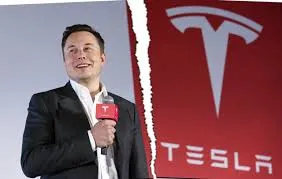Elon Musk has once again left the tech world stunned with the latest advancements in Tesla’s humanoid robot, Optimus Gen 3. During a recent showcase, Musk unveiled groundbreaking features that bring Optimus closer than ever to mimicking human abilities, raising the stakes in the robotics industry. With new capabilities that could redefine the role of robots in everyday life, Optimus Gen 3 is poised to become one of Tesla’s most revolutionary projects.

Elon Musk described Optimus as a “versatile assistant” capable of performing a wide array of tasks, from household chores to industrial labor. Musk envisions Optimus not just as a helper for simple tasks but as an integrated part of human life. During the event, Optimus demonstrated an impressive range of skills, including dancing, serving drinks, and interacting naturally with attendees, showing that Tesla’s work has taken robot-human interaction to unprecedented levels.
But it’s not only about simple actions. Musk has bold plans for Optimus, projecting that it could one day handle more complex and sensitive roles like babysitting, dog walking, and even teaching. With these capabilities, Optimus aims to transcend typical expectations of robots and enter a realm previously reserved for humans.
The Tesla Bot’s human-like functionality is made possible by Tesla’s advanced AI and machine learning systems. Musk revealed that Optimus shares the same AI foundation as Tesla’s Full Self-Driving (FSD) technology, giving it the ability to process vast amounts of visual and sensory data. This neural network approach allows Optimus to recognize objects, navigate complex spaces, and interact with both objects and people in real-time.
Tesla also designed custom actuators and sensors to provide Optimus with precise movements. The robot’s articulated hands and limbs enable it to handle fragile objects delicately, a skill that could redefine robots’ usefulness in various industries. With this level of control, Optimus can perform delicate tasks like sorting items, adjusting small components, or even managing day-to-day errands without causing damage or interruption.
Optimus’ latest version represents a significant step forward in humanoid robotics, combining Tesla’s technical prowess in AI with a level of dexterity that’s rare in robots of its kind. These capabilities open up a world of possibilities, not just for high-tech industries but also for home and healthcare, where robots like Optimus could provide support for those in need, assist in caregiving, or simply make life more convenient.
By leveraging the same algorithms that power autonomous Tesla vehicles, Optimus has the flexibility to adapt to new environments and learn from them autonomously. This adaptability positions it uniquely as both a household aid and a potential game-changer in fields that rely on repetitive tasks, such as manufacturing and logistics.
Elon Musk believes Optimus will become an essential product in both domestic and professional settings. As a truly autonomous assistant, it could reduce human labor for mundane or hazardous tasks, offering a safer and more efficient solution in various sectors. With Tesla’s ongoing commitment to improving Optimus’ functionality, Musk sees a future where humanoid robots like Optimus become as common as household appliances, transforming the way people live and work.
While some remain skeptical about Musk’s ambitious plans, others are excited about the possibilities. Musk has proven that he can push boundaries, and with Optimus Gen 3, he is redefining what humanoid robots can achieve. The industry will be watching closely to see if Optimus can fulfill Musk’s vision and become one of the most transformative products of our era.
News
NEWS: Elon Musk vs. Taylor Swift and Imane Khelif….
Elon Musk vs. Taylor Swift and Imane Khelif: A power play reshaping the digital landscape. Who’s next? In a dramatic turn of events, Elon Musk has once again demonstrated the immense influence he wields over the digital world, sparking chaos…
NEWS: Primanti Bros Shuts Down Franchises….
Primanti Bros Shuts Down Franchises in Red States, Declares “That’s Not the America We Stand For” Primanti Bros, the well-known Pittsburgh-based sandwich chain, has made a controversial decision to close all of its franchises in red states, citing that “That’s…
NEWS: NFL’s Travis Kelce Announces He’s Leaving…
NFL’s Travis Kelce Announces He’s Leaving Elon Musk’s ‘Hate Machine’ X App, Calling It a ‘Toxic Waste Dump’ After Scathing and Hurtful Comments About… In a dramatic turn of events, NFL star Travis Kelce has announced his departure from Elon…
NEWS: ‘Wicked’ Co-Stars Ariana Grande and Cynthia….
EXCLUSIVE: ‘Wicked’ Co-Stars Ariana Grande and Cynthia Erivo’s Cringey Public Lovefests Branded a ‘Sham’ to Cover Up ‘Behind-Scenes Hatred’ The public lovefest between Ariana Grande and Cynthia Erivo is a Wicked lie. That’s the dirt being dished by industry insiders, who said the on-set tension between…
NEWS: Sylvester Stallone is served by a black waitress….
Black Waitress Serves Sylvester Stallone, Saw Note on Check, and Burst into Tears Reba McEntire in Roberto Cavalli, Lainey Wilson in Area Suit & More ACM Awards 2024 Red Carpet Arrivals, Live Updates Country’s biggest stars gathered on the 2024 Academy…
NEWS: Steph Curry, 36, FINALLY VERIFIES THE STORIES….
At 36, Steph Curry FINALLY Confirms The Rumors Steph Curry Addresses When His NBA Career Could Be Over Steph Curry and the Golden State Warriors will host LeBron James and the Los Angeles Lakers on Christmas in what will…
End of content
No more pages to load











